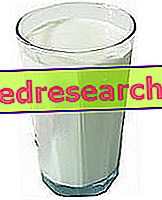Aminoglycosides are a class of natural antibiotics derived from different types of actinomycetes.
The forefather of aminoglycosidic antibiotics - streptomycin - was discovered by biologist Selman Abraham Waksman, who isolated it from cultures of Streptomyces griseus .

Indications
For what it uses
Aminoglycosides have a fairly broad spectrum of action against aerobic bacteria, both Gram-positive and Gram-negative. However, due to the toxicity that characterizes them, their use is limited to the treatment of serious infections caused by Gram-negative microorganisms.
Action mechanism
Aminoglycosides exert their antibacterial action by interfering with the protein synthesis of bacteria.
Protein synthesis in bacterial cells takes place thanks to particular organelles called ribosomes. These organelles are made up of ribosomal RNA and proteins, associated with each other to form two subunits: the 30S subunit and the 50S subunit.
The task of the ribosome is to translate the messenger RNA from the nucleus and to synthesize the proteins for which it encodes.
The aminoglycosides are capable of binding to the 30S ribosomal subunit, by doing so they are able to:
- Prevent the messenger RNA from binding to the ribosome;
- Thus inducing a "misreading" of the same messenger RNA, in this way, the ribosome synthesizes "wrong" proteins called nonsense proteins.
Some of these non-sense proteins enter the bacterial cell membrane altering their permeability. The alteration of the permeability of the bacterial cell membrane allows the entry of further antibiotic into the same cell, causing a total block of protein synthesis.
All of these effects cause devastating consequences for the bacterial cell that eventually dies.
Resistance to aminoglycosides
Bacteria can develop resistance against aminoglycosides by making changes to their structure or by activating particular mechanisms, including:
- Changes to the structure of the bacterial ribosome;
- Alterations in the permeability of the bacterial cell membrane leading to a reduction in antibiotic absorption;
- Production of specific bacterial enzymes that attack aminoglycoside and inactivate it.
Routes of administration
Aminoglycosides are absorbed little in the gastrointestinal tract; therefore, intravenous or intramuscular administration is preferred.
However, there is an aminoglycoside that can be administered orally: paromomycin . This drug can be used to treat intestinal infections caused by sensitive bacteria, to treat intestinal parasites (such as intestinal amoebiasis) and to sterilize the intestinal contents in preparation for surgery.
Some aminoglycosides can also be administered topically, such as - for example - gentamicin and neomycin .
Side effects
Aminoglycosides have a considerable toxicity, above all in the ear and kidneys. In particular, these antibiotics can cause balance problems, hearing loss and renal tubular necrosis. These types of toxicity appear to be due to a certain affinity that the aminoglycosidic antibiotics possess towards the renal cells and the sensitive cells of the inner ear.
The side effects induced by aminoglycosides are insidious, since they can also be delayed. Therefore, before experiencing symptoms, patients may have already suffered serious damage.
Finally, following the use of aminoglycoside antibiotics, cases of curare-like neuromuscular block have been reported. This type of side effect may increase muscle weakness in patients with preexisting myasthenia gravis or pre-existing Parkinson's disease.



